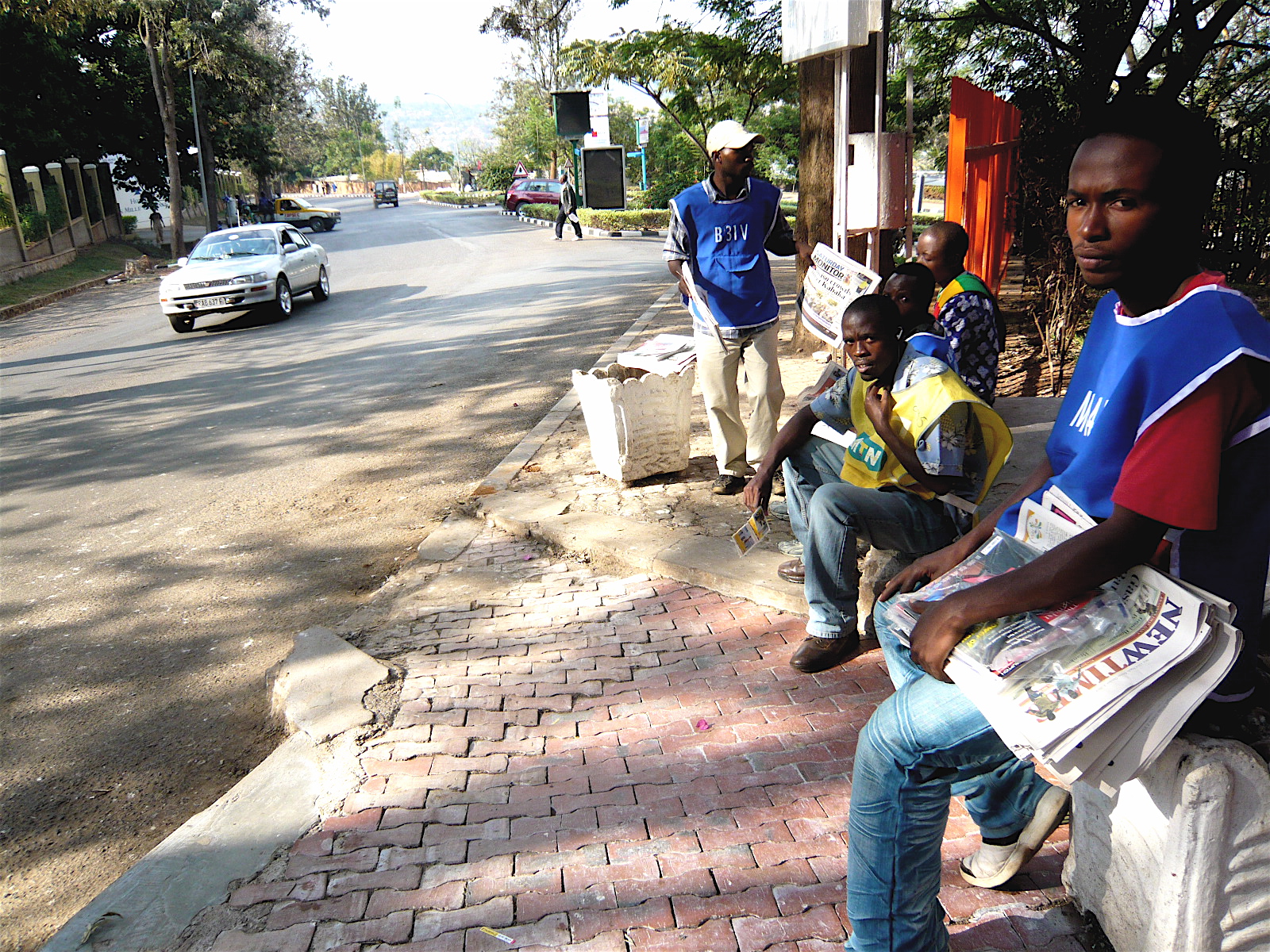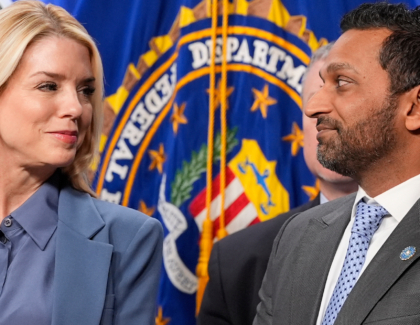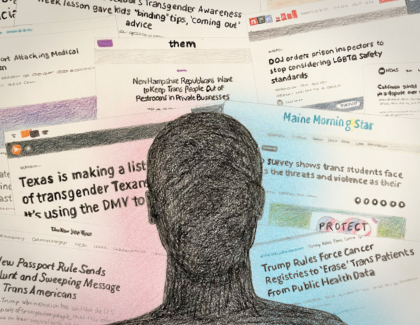Sign up for the daily CJR newsletter.
April 7 marks 25 years since the start of the Genocide Against the Tutsi in Rwanda. Since then, the Rwandan government has had a complex relationship with the press. Last fall, the government of Rwanda updated its penal code, officially decriminalizing defamation, a move that the Rwanda Journalists Association praised as “a very important step.” Yet the code also made it a crime to defame the country’s president, or to “humiliate”—“verbally, by gestures or threats, in writings or cartoons”—a government official. A violation of this law carries a potential jail sentence of two to seven years or a fine of up to 7 million Rwandan francs (approximately $7,750). These updates to Rwanda’s legal framework reflect the real progress the country has made in developing its media landscape since it was wracked by violence in the mid-1990s. But they also hint at the continued wariness Rwandans exhibit toward the field of journalism, and a recent investigation shows they continue to hold the country’s media industry back. In many ways, Rwandan media, like the country at large, today exists in what one researcher, Dr. Ingrid Samset, referred to as a state of “repressive peace.”
In 1994, genocide killed an estimated 800,000 Rwandans. Animosity between Rwanda’s ethnic Hutu and Tutsi populations had been long-simmering: in 1990, civil war broke out as exiled Tutsis attempted to take back control of the country from the Hutus, in power since the late 1950s. A shaky peace remained in place until the plane carrying Rwanda’s president, Juvénal Habyarimana, was shot down over Kigali in April 1994. In the aftermath of his murder, the country erupted into chaos, and Tutsis were slaughtered by the hundreds of thousands.
Researchers have suggested that specific Rwandan media outlets—referred to by scholars as “hate media” for their incendiary broadcasts urging violence against Tutsis—were partly to blame. A 2009 Harvard Kennedy School study estimated that 51,000 people “participated in the violence as a direct result of propaganda transmitted by the infamous Radio Télévision Libre des Mille Collines.”
After the genocide, Rwandan society had to be entirely rebuilt—and the media was no exception. In the 25 years since, the country has made impressive social and economic developments, including in its media sector: press freedom is inscribed in Rwanda’s constitution, Rwandan universities offer formal journalism studies, and there are now dozens of media outlets, both public and private. At the same time, international organizations have criticized the relative lack of media freedom in Rwanda; in 2016, Reporters Without Borders declared that “the spectre of genocide is used to justify the extensive constraints that the government places on the media.”
In 2016, to get an on-the-ground look at how Rwandan journalism is functioning, we interviewed 24 Rwandan journalists about the state of the industry. We found that while the number and types of outlets have grown substantially, Rwanda’s media landscape is unique and complex, because Rwandans are still processing the genocide and learning to live in its wake. Most significantly, in addition to legal impediments to free expression, Rwandan journalists are strongly inclined to self-censor to avoid creating conflict or fear amongst the general public or falling afoul of government restrictions.
READ: In Gambia, young journalists prepare to graduate into a country free from dictatorship
The first newspaper published in Rwanda was established in 1933 and put out by the Catholic Church. That was the primary source of news in the country until the 1960s, when the Hutu-led government launched a newspaper and radio station. But it was not until the 1990s that the Rwandan news industry became relatively robust. And when it did, the press in Rwanda did not adhere to Western ideals of press freedom. For the most part, news organizations were government-run and most journalists were not formally trained but were hired because of their connection to government officials. Amid the fighting, the Rwandan government and military used national radio to perpetuate what scholars later described as a “kill or be killed” narrative that escalated the violence. Popular radio broadcasts routinely referred to Tutsis as cockroaches, disclosed their hiding spots, and urged Hutus to slaughter their Tutsi neighbors. The so-called journalists of that period incited violence through their broadcasts, peppering their “reports” with words such as “cut,” “spear,” “eat up,” “massacre,” “exterminate,” and “cleanse.”
One prominent radio station, Radio-Télévision Libre des Mille Collines, was owned by members of the Hutu-led government and other like-minded people in positions of authority who subscribed to the racist thinking of then-president Habyarimana, who instituted policies that disadvantaged Tutsis. RTLM in particular adhered to the pro-Hutu agenda, but throughout the country, reporters with opposing views were not tolerated; in 1994, while the genocide was taking place, 48 journalists who publicly opposed the genocide throughout the country were killed.
Rwanda was, and still is, a highly religious country—its dominant religion being Christianity—and more than half of the country was illiterate a quarter century ago, conditions which combined to form an ecosystem of strong public trust in media. “People are raised and taught to take what they hear on the radio as gospel truth,” wrote Thomas Kamilindi, a Rwandan journalist present during the 1994 genocide, in the 2007 book The Media and the Rwanda Genocide.
After the genocide, there was an influx of international donors interested in rebuilding the nation, which led to an increase in the number of media houses; and the University of Rwanda established the country’s first school of journalism and communication. Amid this rebuilding, Rwanda’s post-genocide government took steps to ensure that the hate media of the recent past would not rise again. While the postwar Rwandan constitution, enacted in 2003, guarantees freedom of the press, a number of clauses allow for restrictions and censorship. A law prohibiting divisionism—defined as anything that promotes “conflicts among the population”—is widely applied and commonly used to restrict journalists, according to a 2015 report by the Rwanda Media Commission. A broad law banning genocide ideology—which includes acts ranging from intimidating or degrading someone to killing them—carries a penalty of up to 25 years in prison, and has been used against journalists on dubious grounds.
But the journalists we interviewed seldom complained about these restrictions, regardless of whether they worked at government-run media houses or independent news organizations (which rely heavily on government-funded advertising). Since the genocide, the Rwandan government has prioritized reconstruction and unity, and many reporters spoke about their desire to work with the government to promote those aims and, in some senses, to right the wrongs of their predecessors. Desperate to avoid another genocide, journalists largely view themselves as unifiers who are working hand in hand with the government, and who thus self-censor what they publish. “You make sure that you don’t publish things that might separate people, that might endanger national cohesion,” said a journalist from the government-funded newspaper Izuba Rirashe. “In Rwanda, we have a particular history that makes us sometimes do things [journalists in other countries] don’t do,” said an editor there. A reporter from Voice of Africa, a religious radio station, suggested that the government’s media restrictions were promoting national development rather than hindering the press’s ability to report: “The government can control the media, but not in a negative way—just in a positive way, to keep things going on and to keep the country in a good light.”
In fact, during our conversations about self-censorship, it was often difficult to determine which of the restrictions to which they adhered had been put in place by the government and which were self-imposed. “We are still in a fragile period,” said a producer at the privately funded outlet Radio/TV 10. “Even if we are having developments in Rwanda…people who committed genocide are still there; people who suffered are still there; widows, orphans are still there.… It means that we have to be careful.… Even if you can’t get penalized, you self-censor yourself, you say…‘This is untouchable, I’m not going to talk on this [subject].’”
A reporter in Kigali who asked that we withhold the name of their publication agreed that the majority of censorship by Rwandan reporters is self-imposed: “There is a bit of censorship…but I don’t think it’s mostly government-led, it’s individual-led.” Similarly, a journalist at the commercial news website Umuseke explained that his own desire, not government regulation, is what drives his tendency to report positively. “I belong to a new generation,” he said. “I know what we want—we just want peace. We just want development. We just want to survive.… People want to bring us back [into] the stories [of the past]? Why? There is no need.”
Many Rwandan journalists we spoke with explained that while there are necessary restrictions in place for the good of the country, overall they feel as if they can report freely and the level of press freedom is improving. Press freedom rankings have reflected that sentiment, albeit slightly. In the past three years, Rwanda has moved from 161 to 156 (out of 180) in Reporters Without Borders’ annual press-freedom ranking.
Much of what the journalists described as freedom, however, sounded suspiciously like restrictions. “You are free to say what you want depending on the topic and depending on the history of our country,” said a reporter from Radio/TV 10. “I can’t say that we are free or we are not free. It depends on what you want to talk about and when you want to talk about [it] and who you are talking to.”
And journalists have suffered in concrete ways from government restrictions on their reporting. In 2011, an editor of a small Rwandan newspaper received a 17-year sentence on charges that included minimizing the genocide, for an article describing Rwandans in that era as “killing each other” (she was acquitted of this charge on appeal). Three years earlier, she’d served a year in prison for publishing an anonymous letter that was critical of the government’s work in the aftermath of the genocide.
And in 2012, an editor at the commercial outlet Umusingi spent a year in jail for divisionism because of content in an opinion column published in his newspaper that stated that men who marry Tutsi women merely because of their beauty may end up having regrets. “Why did they imprison me? Because of journalism?” he asked. “Being a journalist is a profession like other professions, it’s not a crime.”
Yet many journalists spoke about consequences of violating press restrictions in the context of harms to society, not to individual journalists. Because of “our old history, bad history,” the journalist from Umuseke explained, he is cautious about what he writes. “If you let the people talk about all of what’s in their hearts, it can be explosive. It can really be explosive.”
“I know some…people who say, ‘Yeah, I’m Tutsi, I hate Hutu, ’cause they killed my family. I can revenge myself,’” said the reporter from Voice of Africa. “Imagine if you give those people the freedom to say whatever they want.”
Nevertheless, the journalists we spoke with were, more often than not, optimistic about the future of media. They said they have seen increased levels of press freedom over the years and that the rise of the internet, and specifically social media, has helped both reporters and the public to speak more freely. Many agreed, however, that only one thing could significantly change the state of press freedom in the country: new leadership. Current president Paul Kagame, who helped end the genocide and has been in office since 2000, has received worldwide praise for the country’s development, especially in education and health care. But Kagame has also been criticized for his increasingly dictatorial leadership. He instituted Rwanda’s first elections, but international groups have called them a sham, as Kagame has always won more than 90 percent of the vote. His last term was supposed to end in 2017, but a constitutional amendment has now allowed him to potentially remain president until 2034.
It is clear that the “bad history,” as the Umuseke journalist called it, looms large in the country and in the nation’s media landscape—and has led the press to limit its coverage, either out of fear of legal repercussions or because of an impulse toward self-censorship. Of course, critics would argue that by conforming to the desires of the government, journalists are in fact hindering development. By exclusively reporting on progress instead of challenges, the news media may be strengthening existing authoritarian power structures that could, in the long term, limit progress and autonomy. Journalists’ desire to join the government’s mission in promoting unity to avoid another civil war is understandable, but now, a quarter century after the genocide, perhaps the country is ready for a new era of democratic process and free expression, in which journalists can write freely and hold power to account.
Has America ever needed a media defender more than now? Help us by joining CJR today.







